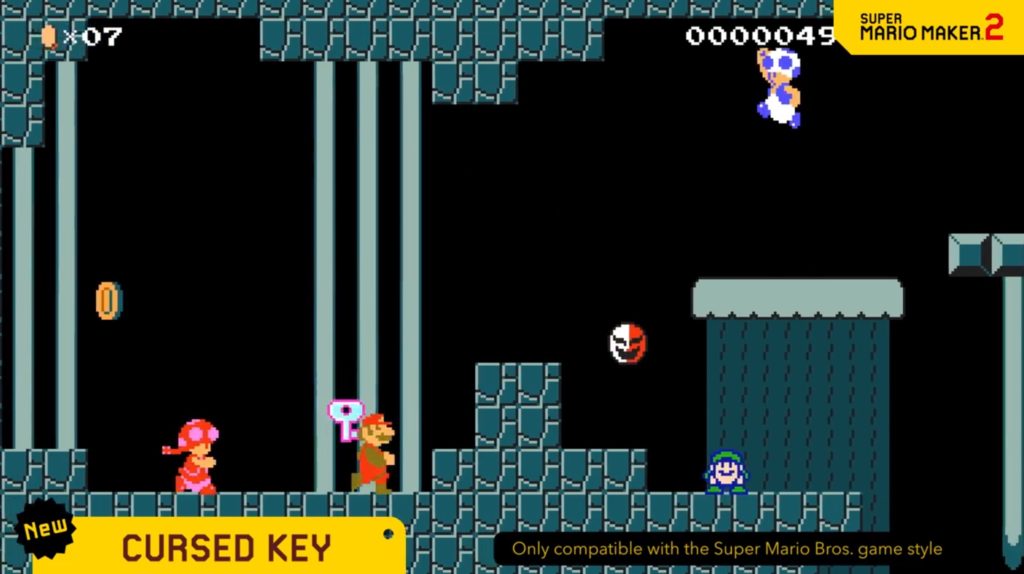
Konno on the idea of a track editor for Mario Kart… So we have underwater sessions, we have flying sessions, we have anti-grav sessions, and we use all of these in a way to create really interesting and fun to drive on courses.” “The race courses themselves is one of the most important–if not the most important elements–in the series, so with Mario Kart 8 we really wanted to divide up the things we could do and make sure we’re really using them effectively.
#REGGIE LEVEL EDITOR KOOPALINGS SERIES#
We wanted to summarize and bring together all the elements of the series into this title.” “We really wanted this game to be a representation of all the games that came before it. Konno on how Nintendo’s ambition for Mario Kart 8 was to create a game that captures the essence of every entry in the beloved series that has come before it… We really want you to look forward to what we’ve done to it this time because it’s something else. “One thing I do want to mention is Rainbow Road, that final course. So we hope you look forward to racing on both of those courses.” This time we actually grabbed Rainbow Road N64 version in addition to the current iteration of Rainbow Road. “Rainbow Road of course is a classic course. Yabuki on how there are two Rainbow Road courses (one is a remake of the N64 course)… I would hope people understand that as well.” There is a lot of adjustment and there is a lot of thought and effort put into that system, and developing it in a way that actually promotes game balance. That feature is not random–it doesn’t just happen. That if you’re at the front then you’ll get hit with a blue shell, so it’s all about luck. “We do hear, and a lot of people out there say it, that Mario Kart is all about luck. It’s our strong hope that folks would want to play with the items as we have balanced them.” At the end we come up with what we hope and feel is a really good balance. From the time we start working on development, thousands of times, maybe even tens of thousands of times, we adjust that balance when we’re playing. “Game balance is also another really important element of Mario Kart that we look very closely at and place a lot of value on. Konno on how the team went to great lengths to ensure that Mario Kart 8 is a well-balanced game…

If you look at Mario and the Koopalings and all the characters, you’re seeing a level and range of animation that you’ve never seen before.” We’ve also done a lot of work with the character animations. “We were able to harness the power of the Wii U to get a huge polygon count, and we were able to make courses that involved a lot of undulating, moving surfaces. “Using the power of the Wii U, we were able to create a Mario Kart title that feels right, and the controls feel like they’re perfect for this game.” We’re seeing bounding, we’re seeing different parts of the kart move, we’re seeing dirt on the tires, we’re seeing skidmarks left on the course–again I think we’ve done a good job of utilizing that graphical power.”


“We’ve also been able to show movement on the that we haven’t seen before. Yabuki also talking about the game’s graphics…
#REGGIE LEVEL EDITOR KOOPALINGS TV#
“This time with the power of the Wii U we really made an effort to keep that graphic quality high regardless of how many ways we were splitting the TV into.” So we put a lot of effort into making this a good looking game–it’s a very pretty game.” And during those six years, we were able to incorporate a lot of technology in our development process, but especially on the graphics side. The last console version was Mario Kart Wii, which was released in 2008, so it was about six years ago.

“We’re working with HD for the first time, and we really wanted to take advantage of that. During a roundtable session held at GDC last month, the two touched on the game’s graphics, balance, brand new Rainbow Road course, and more. GameSpot has published a series of articles featuring commentary from Mario Kart 8 producer Hideki Konno and director Kosuke Yabuki.


 0 kommentar(er)
0 kommentar(er)
